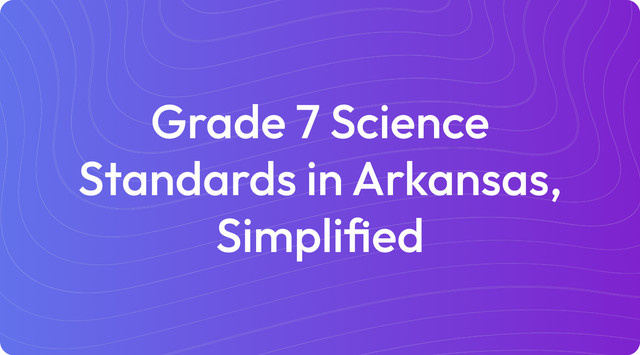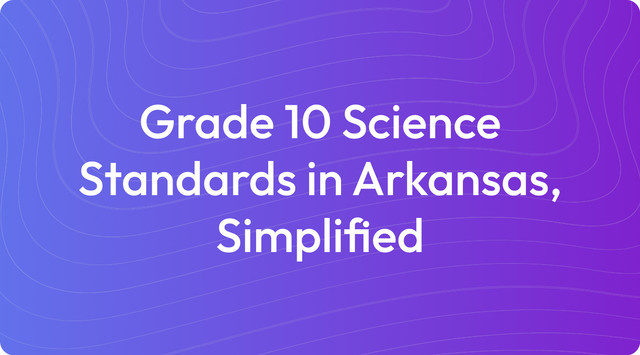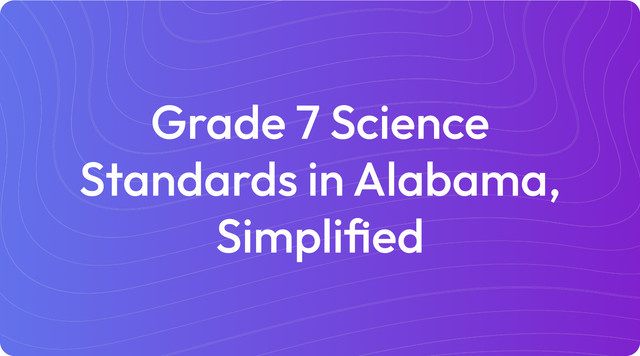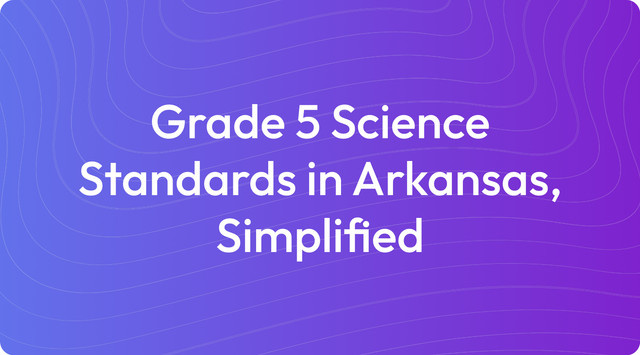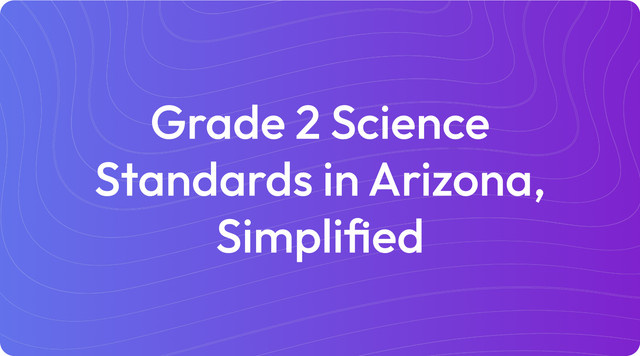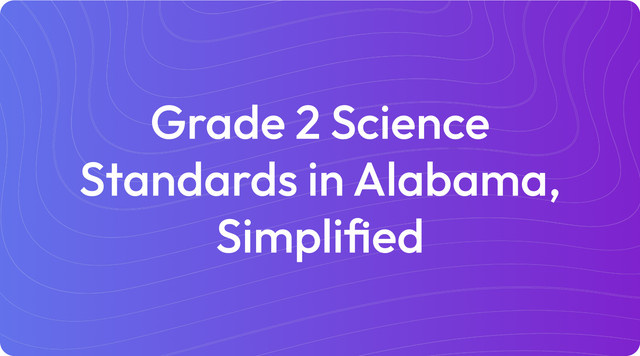Grade 4 Science Standards in Arkansas, Simplified
Grade 4 science in Arkansas explores energy, waves, and Earth's history—including engineering. Simplified standards—read on TeachShare!
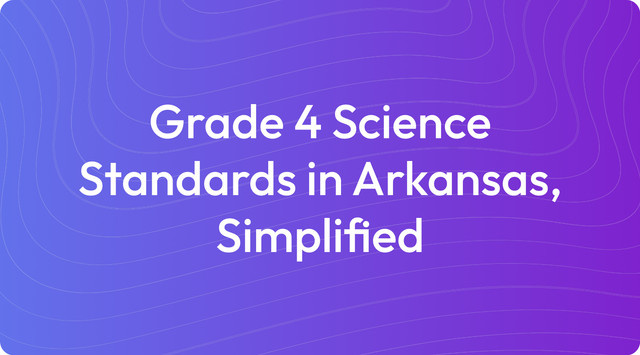
We understand that working with state academic standards can be a detailed process, often involving many layers of information. Our goal is to offer a straightforward look at what these standards are and how they function in schools. This can help you make informed decisions about curriculum and instruction.
Education standards are learning goals that outline what students should know and be able to do in each subject and grade level. For teachers, these standards serve as clear benchmarks for student learning but do not dictate specific teaching methods or materials. For example, the Grade 4 Science Standards in Arkansas define expected outcomes in areas like Physical Science and Life Science, giving a framework for instruction.
What Are Grade 4 Science Standards in Arkansas?
To support your curriculum planning, it's helpful to have a clear picture of the learning goals for your students. The Grade 4 Science Standards in Arkansas focus on three-dimensional learning across four key domains. Here’s a breakdown of the specific standards:
Physical Science (PS)
Use evidence to explain the relationship between energy and motion.
Make observations to show energy transfer (e.g., sound, light, heat).
Design and test devices that convert energy from one form to another.
Develop models to describe how waves transfer information.
Life Science (LS)
Describe plant and animal internal and external structures and their functions.
Use models to describe how animals use their senses to process information.
Earth and Space Science (ESS)
Identify and interpret patterns in rock layers to explain Earth’s history.
Analyze data to show effects of weathering and erosion on landforms.
Generate solutions to reduce impacts of natural Earth processes (e.g., floods, earthquakes).
Engineering Design (ETS)
Define problems that can be solved through engineering.
Plan and test solutions to engineering challenges.
The framework for these standards is guided by the Next Generation Science Standards and information from the Arkansas Division of Elementary and Secondary Education.
Key Tested Standards
In Arkansas, Grade 4 Science assessments typically focus on foundational skills and concepts that are critical for a student's future learning. These standards emphasize investigation, problem-solving, and real-world applications, which are often a focus on state tests. The key tested standards generally include the following:
Physical Science (PS)
4-PS3-2: Observe and explain how energy is transferred (sound, light, heat, motion).
4-PS3-3: Design a device to convert energy from one form to another (e.g., motion to sound).
4-PS4-1: Model how waves carry energy and transfer information.
Life Science (LS)
4-LS1-1: Describe how plants' and animals' internal and external structures help them survive.
4-LS1-2: Explain how animals use their senses to respond to their environment.
Earth and Space Science (ESS)
4-ESS2-1: Analyze and interpret data to show how weathering and erosion shape the land.
4-ESS3-2: Create solutions to reduce the impacts of natural hazards (e.g., floods, earthquakes).
This information is based on guidance from the Next Generation Science Standards and the Arkansas Division of Elementary and Secondary Education.
Example Learning Objectives for Unit Planning
Learning objectives translate broad standards into specific, measurable goals for your students. They clarify what students should be able to do by the end of a lesson or unit, which helps guide both instruction and assessment.
To assist with your unit planning, here are some student-friendly learning objectives for two key standards:
Standard: 4-PS3-2 (Observe energy transfer through sound, light, heat, or motion)
I can explain how energy moves from one object to another (e.g., heat making an object warmer).
I can investigate how light, sound, or motion transfers energy.
I can give examples of how energy changes form, like light to heat or motion to sound.
Standard: 4-LS1-1 (Describe how plant and animal structures support survival)
I can describe how a plant’s parts, like leaves or roots, help it survive and grow.
I can explain how an animal’s body parts, like claws or fur, help it survive in its environment.
I can compare the structures of different plants and animals and explain how they are adapted for survival.
Key Changes & Updates
The Arkansas K-12 Science Standards were updated in 2015 to align with the Next Generation Science Standards (NGSS). This shift was designed to make science education more hands-on and inquiry-based, connecting classroom concepts to real-world applications. For Grade 4, the key updates are centered on a few core principles:
Three-Dimensional Learning: This approach integrates Science and Engineering Practices (what students do), Disciplinary Core Ideas (what students know), and Crosscutting Concepts that link different science domains
Focus on Phenomena and Real-World Problems: Instruction is anchored in observable events and practical questions, such as how animals survive or how to reduce the impact of natural disasters
Engineering Integration: Engineering design is now woven into the standards, asking students to apply their knowledge to design and test solutions
Performance Expectations: The focus is on what students can do with their knowledge, requiring them to demonstrate understanding through hands-on tasks and modeling
These updates aim to build a deeper, more practical understanding of science and better prepare students for future learning.
Create with TeachShare
We know that turning state standards into engaging, effective classroom materials takes time and effort. Our platform is designed to support you by making it easier to create high-quality, research-backed resources that meet these specific requirements. Let us help you focus more on teaching and less on prep work. Start creating standards-aligned instructional resources with TeachShare now.
Frequently Asked Questions
1. What key areas does Grade 4 Science focus on?
The standards for Grade 4 science are organized around a few core topics. Here’s what your students will explore:
- Physical Science: This includes the transfer of energy, different forms of energy, and waves.
- Life Science: Students learn how the internal and external structures of plants and animals help them survive.
- Earth and Space Science: This covers weathering, erosion, and developing solutions for natural hazards.
- Engineering Design: A practical component where students design and test solutions to real-world problems.
2. Could you explain three-dimensional learning and its importance?
Three-dimensional learning is an approach that helps students think and act like scientists and engineers. It weaves together three distinct elements to create a more connected and practical learning experience. The three dimensions are:
- Science and Engineering Practices (SEPs): Students actively engage in the work of scientists by asking questions, developing models, and solving problems.
- Crosscutting Concepts (CCCs): These are big ideas, like cause and effect or patterns, that connect learning across all scientific fields.
- Disciplinary Core Ideas (DCIs): This is the foundational subject matter content for the grade level.
3. How do the standards encourage hands-on activities?
The standards are designed to get students actively involved in science. Instead of just reading from a textbook, they will be doing things like:
- Investigating energy transfer with tools such as ramps or flashlights.
- Creating models of landforms to see how erosion changes them over time.
- Designing and testing their own solutions to reduce the impact of natural disasters like floods.
4. What kind of assessments align with these Grade 4 standards?
Assessments are designed to measure what students can do, not just what they can memorize. You can expect to see a mix of assessment types, such as:
- Performance-based tasks: For example, you might ask students to build a device that shows energy transfer or test a model designed to protect against a natural hazard.
- Formative assessments: These are ongoing checks for understanding, like having students observe and record erosion patterns in a classroom model.
- Summative assessments: These measure learning at the end of a unit, such as asking students to write an explanation of how a plant’s parts help it survive.
5. How do these standards set students up for success in middle school science?
By focusing on foundational skills, these standards give fourth graders the tools they need for more advanced science in the years ahead. They build a strong base in critical thinking, problem-solving, and interpreting data. These are the same skills that will be expanded upon in middle school as they study more complex topics like ecosystems, energy systems, and Earth’s processes.
Answer


